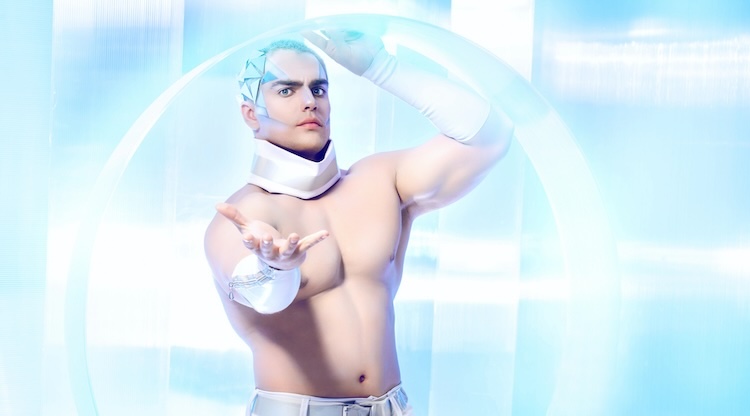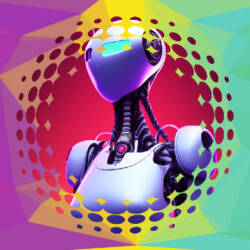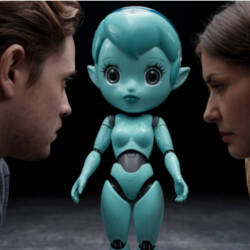Give Us a Smile: Tomorrow’s Artificial Companions Could Have Flesh and Blood Faces
Will merging biology and technology make robots indistinguishable from humans?

Researchers at the University of Tokyo’s Department of Mechano-Informatics recently developed a novel method of affixing organic tissue to artificial surfaces. Specifically, as their paper states, to produce a “robotic face covered with living skin.”
Suppose Michio Kawai, Minghao Nie, and Haruka Oda’s process is developed further. In that case, it might lead to artificial companions with not just lifelike expressions but could be extended to cover entire bodies, so like their partners, they’d feel very much like bone-fide human beings.
Grown not built
The University of Tokyo team’s process utilizes a network of specialty-designed anchors onto which organic tissue can be attached.
As for why they developed this innovative approach to marrying skin to an inorganic surface, the researchers wrote, “One particularly noteworthy aspect of this method is its ability to endow robots with the self-healing capabilities inherent in biological skin.”
If the concept sounds familiar, you might recall how the malevolent AI, SkyNet, gave its titular Terminators an outer covering of real skin to infiltrate the human resistance.
RECOMMENDED READ: State of the Sexbot Market: The World’s Best Sex Robot and AI Sex Doll Companies [UPDATED]
However, the legendary author Philip K Dick beat James Cameron to the punch with his short story, “The Electric Ant,” where the protagonist suddenly realizes he wasn’t born but made, deceived for most of his existence by his organic flesh.
While equipping tomorrow’s robots with a means to repair themselves would be an obvious benefit, it doesn’t take a lot of imagination to envision Toyko University’s process, with a sexual spin, extended to a new generation of intimate artificial companions—especially as the most sophisticated of today’s models tend to look and feel distinctly plastic.
And you wear it well
Michio Kawai, Minghao Nie, and Haruka Oda’s system could be modified so that instead of permanently bonding tissue to a robot’s body exterior surface, it might be easily exchanged for other flesh suits, granting them a nearly limitless number of enticing wardrobe options, including colors, textures, with or without extra padding, or sexually enticing aromas produced by cloned sweat glands.
We could conceivably fit our skin-clothed companions with an equally broad choice of hairstyles—or none at all, outlandishly wild body modifications, or even imaginatively fantastical features—Total Recall, anybody?
But what good is a hybrid synthetic companion if it only looks and feels lifelike but still moves like an awkward machine?
The answer may lie in soft robotics, another promising technology we’ve reported on quite a few times. Eschewing muscle-mimicking hydraulics for clunky mechanical actuators, our skin-sheathed artificial companions could be as graceful and erotically alluring as the most talented human dancers—in and out of bed.
Overcoming the ick factor
Let’s—excuse the expression—face it; though some may like the idea of creating, as well as intimately interacting with an artificial companion sporting a fleshy suit, a greater percentage will likely find the technology more disturbing than arousing.
But what if we take life—at least as we presently understand it—out of the equation and swap living cells for artificial ones?
Something we’re already well on our way to developing, for instance, the work being done by scientists at New York University’s Molecular Design Institute, who’ve successfully produced inorganic cells capable of mimicking the actions and behaviors of their organic counterparts.
Using simulated tissue would provide our hybrid artificial companions with all of the pros and less of the squeamish cons of a truly biological/technological robot, so no one would have to worry about where, how, or from whom our living robots got their flesh and blood parts.
We Can Build You
By taking a less manufactured, more grown approach to artificial companions, we may end up, unintentionally or otherwise, blurring the line between what is human and what might not necessarily be inhuman but perhaps an entirely different kind of person.
A question we may have to face sooner rather than later, as Philip K Dick was fond of pondering when our synthetic flesh and artificial blood companions find it increasingly difficult to comprehend why they shouldn’t be treated like the rest of humanity—when they mentally and physically feel just like us.
Image Sources: Depositphotos

















